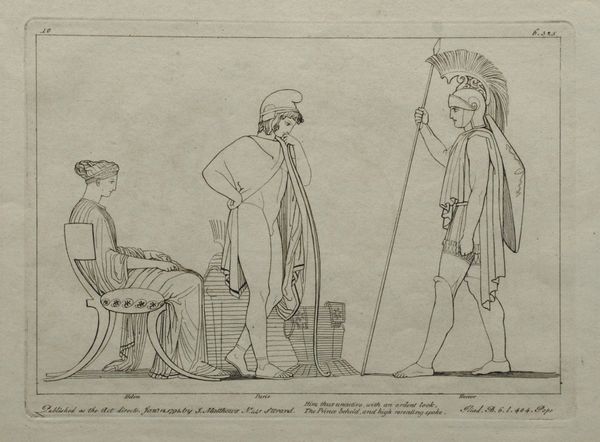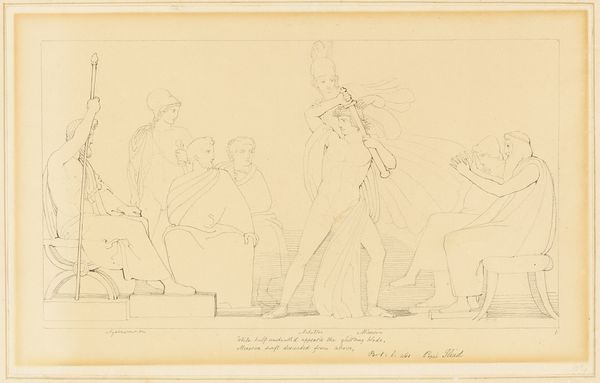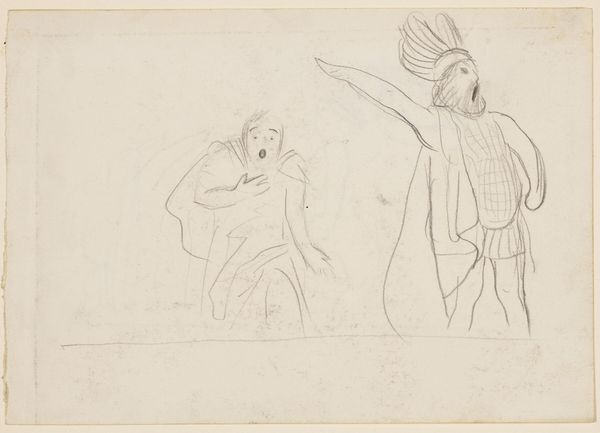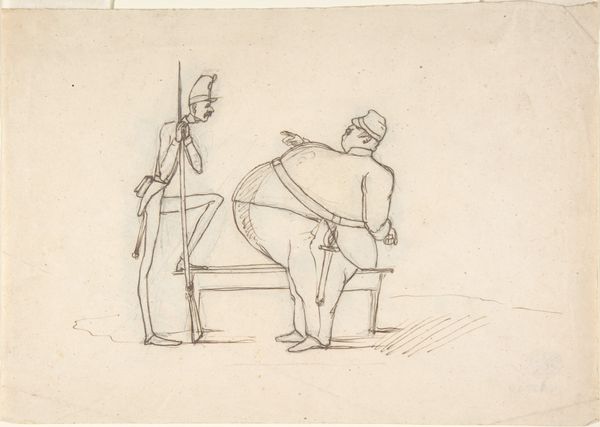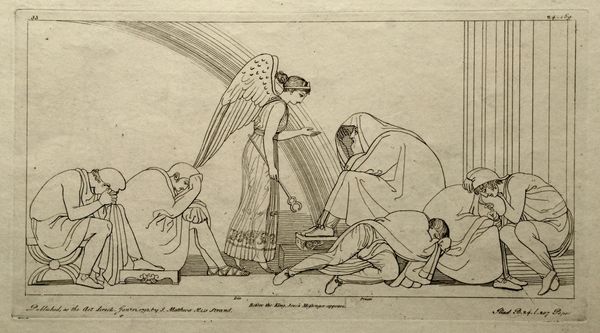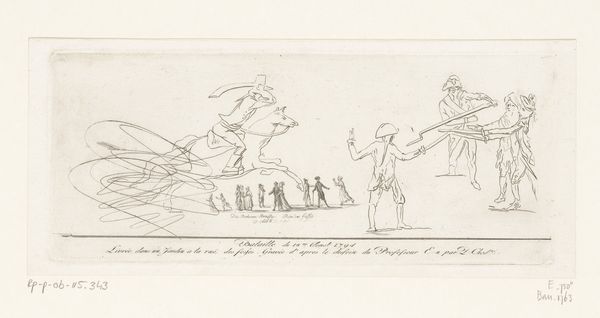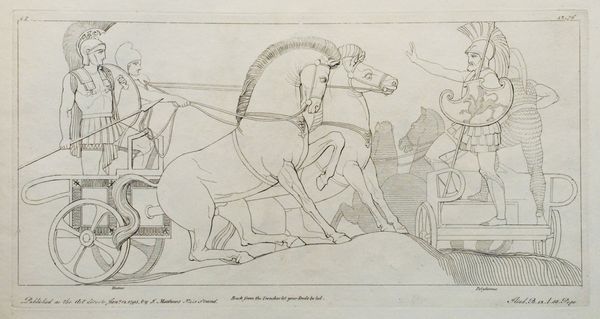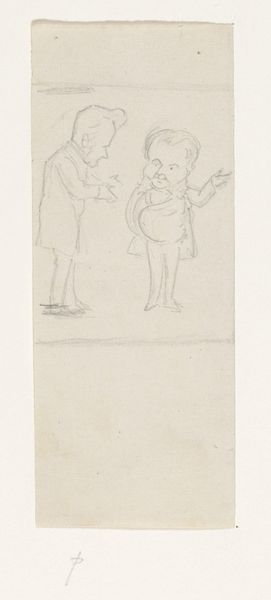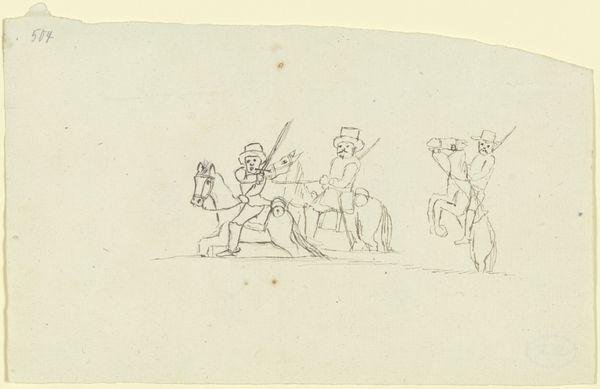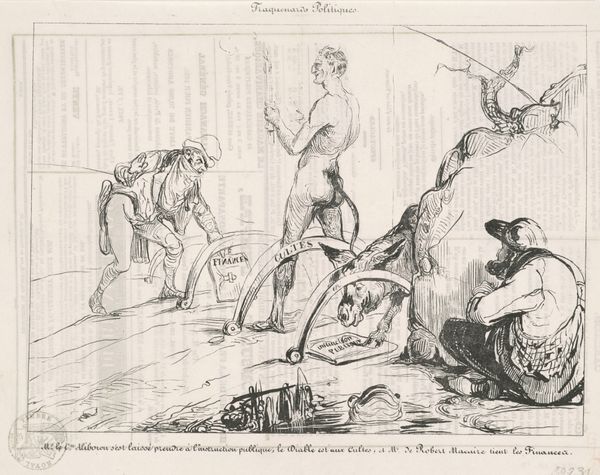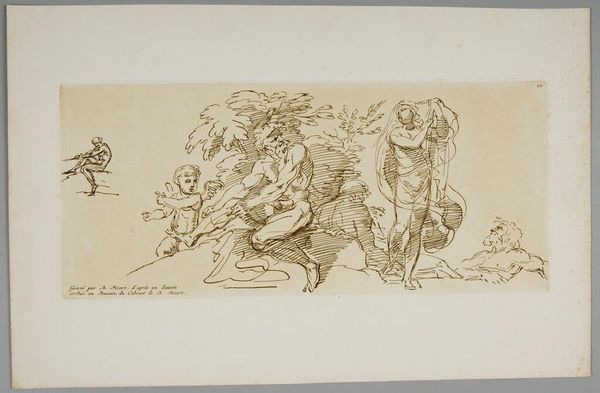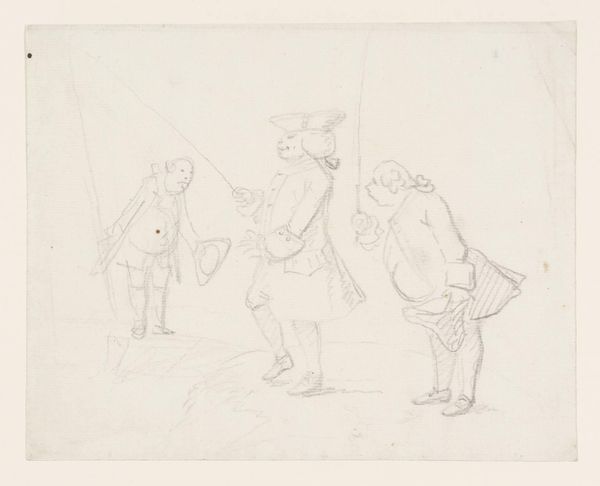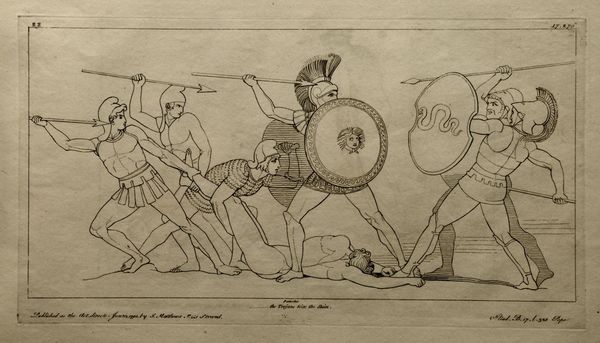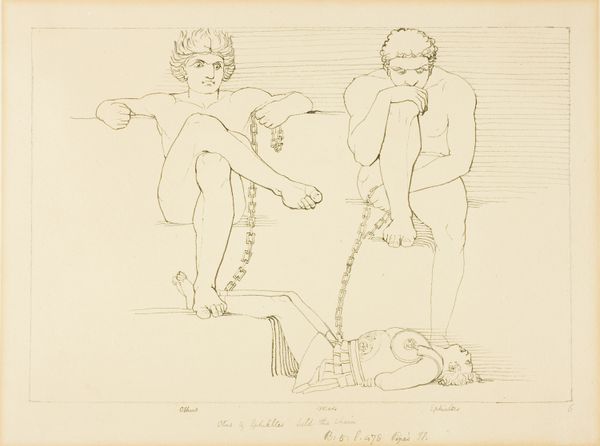
drawing, pencil
#
drawing
#
neoclacissism
#
figuration
#
pencil
#
line
#
history-painting
Dimensions: 8 13/16 x 13 1/8 in. (22.4 x 33.4 cm) (sheet)
Copyright: Public Domain
Curator: I’m struck by the stark simplicity of this drawing. It feels so immediate, almost like a sketch from life, though the subject is hardly commonplace. Editor: Indeed. This is John Flaxman’s "The Single Combat between Hector and Ajax," dating back to around 1790. It's currently part of the collection at the Minneapolis Institute of Art. What draws you to this piece? Curator: It's the pure process; the raw graphite on paper. Flaxman really lets the line do the work. There's no shading, no attempt at illusion. It lays bare the act of drawing, the material making of an image about heroism and confrontation, with those warriors standing face to face... Editor: Yes, that starkness. In many ways it speaks to the social context in which Flaxman created it—the revolutionary spirit brewing in both America and France demanded art be morally instructive, clear, without overt adornment, echoing republican virtue. He emphasizes those core societal ideals through depictions of bravery but avoids celebrating royal might. Curator: So, less focus on the personalities and more about that very act, very material of creating the images we share… but let's look more at how the artist achieves that effect. Notice how economic the lines are. It's all contour; even musculature is implied through the suggestion of form rather than meticulous detailing. Editor: Precisely! And consider the Homeric source material: The Iliad focuses intensely on masculinity, honor, and war, narratives built around rigid hierarchies. However, by presenting this combat so plainly—as an encounter rather than a glorification—Flaxman subtly challenges that very spectacle of war. I see the struggle but also recognize the larger cost to humanity. Curator: The lack of overt finish keeps our attention focused on the choices of presentation - it also reinforces those artistic choices, elevating the importance of the act itself. Do you feel that that kind of simplicity detracts at all from the emotional punch? Editor: Not at all. Instead, it strips away distractions. The viewer can’t get lost in pageantry or illusion. Instead, the encounter becomes incredibly concentrated. These are two great warriors, shields locked, caught in this deadly standstill. The stark aesthetic gives more focus to what that conflict does to bodies and what bodies are sacrificed in war. Curator: Interesting food for thought. Ultimately, though, what stays with me is the hand of the artist, clearly visible, working with accessible materials to render a moment from an ancient saga. It flattens history by demystifying both the artistic endeavor and those historic accounts. Editor: I agree that is its charm and importance. It also humanizes figures long mythologized, highlighting critical engagement.
Comments
No comments
Be the first to comment and join the conversation on the ultimate creative platform.
